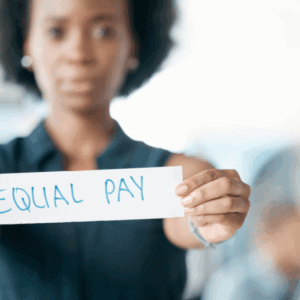
We are at a historic inflection point regarding US wealth inequality. The facts, by now, are well known. The wealthiest top one percent owns an ever-greater share of US assets. Meanwhile, the US economy fails to deliver for the vast majority of people.
As a 2024 Urban Institute study reports, “In the past 60 years, America witnessed a massive transfer of wealth from the middle class to the wealthiest families….In 1963, the wealthiest families had 36 times the wealth of families in the middle of the wealth distribution. By 2022, they had 71 times the wealth of families in the middle.”
Not surprisingly, there is a racial dimension to this. On average, families of color—particularly Black families—have the least wealth. The US racial wealth gap hasn’t narrowed for 70 years.
Unchecked wealth inequality isn’t just about fairness. Inequality limits economic growth, destabilizes democracies, and corrodes social trust. Those of us who live in the United States in 2025 surely recognize that these are not theoretical concerns.
But what can be done? The answer is simple but hard to implement. To close the racial wealth gap, public policy must address the real, structural cause of wealth inequality, and reducing it requires establishing equitable access to the assets and capital that build wealth.
While many people know how to reduce wealth inequality, political opposition to policy change is fierce. Thus, fighting wealth inequality requires two things: a clear articulation of policy solutions, and a strategy to turn ideas into real public policy that is passed into law and implemented.
What Would a Wealth Equity Agenda Look Like?
As a Federal Reserve Bank of Minneapolis article notes, wealth is a simple equation. “Where does wealth come from? Yesterday’s wealth, mostly,” wrote Lisa Camner McKay, senior writer at the Opportunity & Inclusive Growth Institute. In terms of building wealth, this past wealth, as McKay notes, can add savings (income minus expenses) from the previous year.
Inequality limits economic growth, destabilizes democracies, and corrodes social trust…these are not theoretical concerns.
Since wealth begets wealth, absent policy intervention, inequality and this wealth gap is likely to worsen over time. For example, the passing of the baby boom generation, which The New York Times reported holds $78 trillion in household wealth, is expected to generate a record intergenerational wealth transfer.
But who will benefit? “The top 1 percent—which holds about as much wealth as the bottom 90 percent and is predominantly white—will dictate the broadest share of the money flow,” noted the article.
Policies That Matter
What can public policy do to support a broader, more equitable distribution of wealth? The tax system is one mechanism. This is one reason why it was so disappointing to see the latest tax cuts for the wealthy that were signed into law last July, which The New York Times called “more regressive than any major federal law in decades.” Beyond the tax system, targeted measures—like Baby Bonds and guaranteed income policies—also offer promising ways to build wealth. In particular, baby bonds, an approach developed by scholars Darrick Hamilton and William Darity Jr., offer every child a substantial publicly funded trust account, scaled according to family wealth, that can be accessed when they reach adulthood. The purpose is simple: give every child, regardless of race or zip code, an endowment for their future. A study from Naomi Zewde at University of California in LA estimates that Baby Bonds programs could narrow the racial wealth gap for young adults by as much as half.
Across Georgia, New Mexico, Connecticut, and beyond, Baby Bonds are moving from theory to implementation. By creating public individual savings accounts—a public inheritance, if you will—these initiatives can help compensate for the majority of people who do not benefit from substantial inheritances.
Guaranteed income, as the name suggests, does not build wealth directly—but it does alleviate poverty. Early advocates of the idea include Johnnie Tillmon of the National Welfare Rights Organization, who convinced Martin Luther King Jr. of the importance of the concept. In King’s final book, Where Do We Go From Here: Chaos or Community?, he wrote, “I am now convinced that the simplest approach will prove to be the most effective—the solution to poverty is to abolish it directly by a now widely discussed measure: the guaranteed income.”
Today, the “direct cash transfer” concept is backed by 300 studies globally and over 100 US programs. Guaranteed income restores dignity and agency by getting cash to people, so they can prioritize spending on their own to meet such needs as housing, childcare, and emergency savings.
The group I lead, the Georgia Resilience & Opportunity Fund, an Atlanta-based nonprofit, is piloting a program of our own called Freedom Futures: Cash for Today, Capital for Tomorrow. Funded by philanthropy, it is a four-year accelerated pilot program that provides 50 young adults ages 18 to 25 with a guaranteed income of $500 a month, an investable lump sum of $40,000 for wealth building, and financial education. While we hope our test study adds to the evidence that income and wealth supports work, we’re also hoping to learn about how these different elements work together. We believe that combining financial education with funds to invest will make the lump-sum payments more effective.
Policy Cost and Cost of Inaction
One common question concerns funding. During the 2023 Congress, Senator Cory Booker (D-NJ) and Representative Ayanna Pressley (D-MA) coauthored the American Opportunity Accounts Act, a Baby Bonds proposal that would seed $1,000 for every child at birth, with progressive annual investments of up to $2,000 a year.
It is clear that greater economic equality means that the national economy is better able to tap into the skills and talents of all people.
An Urban Institute report cited two studies that offered estimates of $60 billion and $82 billion a year as the annual cost of the program. That is not cheap, but given that the 2025 federal budget is $5.35 trillion, even the higher estimate is just over 1.5 percent of that amount. Moreover, Booker and Presley claimed that this expense could be fully met by restoring estate taxes to their 2009 levels.
In Georgia, a new report recommends funding a state Baby Bonds program by dedicating a fraction of its annual surplus revenues or closing a special interest tax loophole to fund the trust.
Inaction also comes at a cost. Estimates vary widely, but it is clear that greater economic equality means that the national economy is better able to tap into the skills and talents of all people. This is why greater economic equality tends to lead to higher per capita gross domestic product.
An estimate made by the National Equity Atlas contends that if there were no racial wealth gap in the United States, then US gross domestic product in 2022 would have been $3.5 trillion higher—which, given that GDP was $26.14 trillion that year, would be about 13.4 percent higher than it was.
Building the Movement
While today’s political landscape presents real challenges, we are seeing bipartisan interest in early wealth-building strategies, at least nominally.
As NPR reports, the reconciliation bill passed by Congress in July did include a provision to seed $1,000 for every child at birth for children born between January 1, 2025, and December 31, 2028—a Baby Bond in design. The law also allows families to contribute up to $5,000 a year, and companies can contribute $2,500 a year to accounts of employees’ dependents. Who benefits, however? The design of this program reflects a central tension of wealth-building policy. As Hamilton told NPR with great skepticism about the program, “The problem is who has resources to save in the first place, but those that are already wealthy?”
In other words, the design reinforces the “wealth begets wealth” pattern, since the parents most likely to ante up $5,000 a year for their children’s accounts are those who have $5,000 to spare. This is very different from state programs and the American Opportunity Accounts Act design, which focus their efforts on helping children whose parents are not wealthy.
One possible strategy for changing the politics—and getting the wealth gap reduction on the federal agenda—is mobilizing the South.
Still, 20 states across the country have introduced Baby Bonds legislation, and nine programs have been initiated, an indication that there is an appetite for the policy.
One possible strategy for changing the politics—and getting the wealth gap reduction on the federal agenda—is mobilizing the South.
The South, of course, is heavily GOP-dominated. In 2024, Republicans won 111 seats in the South compared to 44 won by Democrats. But the South is also the region of the country that has the highest poverty rate, which means it has the most to gain by reducing wealth inequality. There is indeed latent political power here.
An Investment for the Future
I started my career as a teacher and assistant principal in New Orleans. As a teacher, I would tell students that with dedicated effort and hard work, they could succeed. As students grappled with eviction notices at home, not enough food in the fridge, caregiving responsibilities beyond their years, and violence within their communities, this felt like a hollow promise. They were being asked to catch up to peers who have had advantages over multiple generations.
Still, many did succeed, but the morality of asking some children to bridge the gap of centuries of disinvestment on their own is deeply flawed.
If policy has created these social inequities, then it can and must play a role in charting a different future. While the scale of economic inequality can seem daunting and intractable, there are promising sets of solutions before us that offer action and hope.














